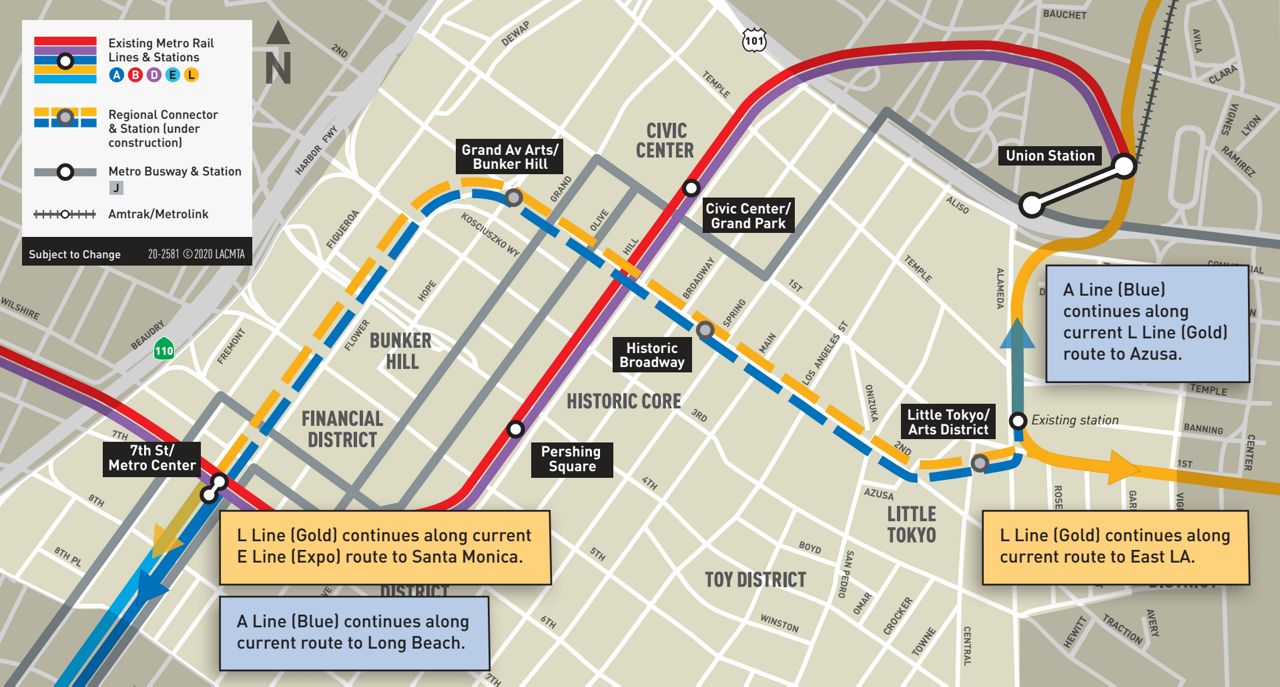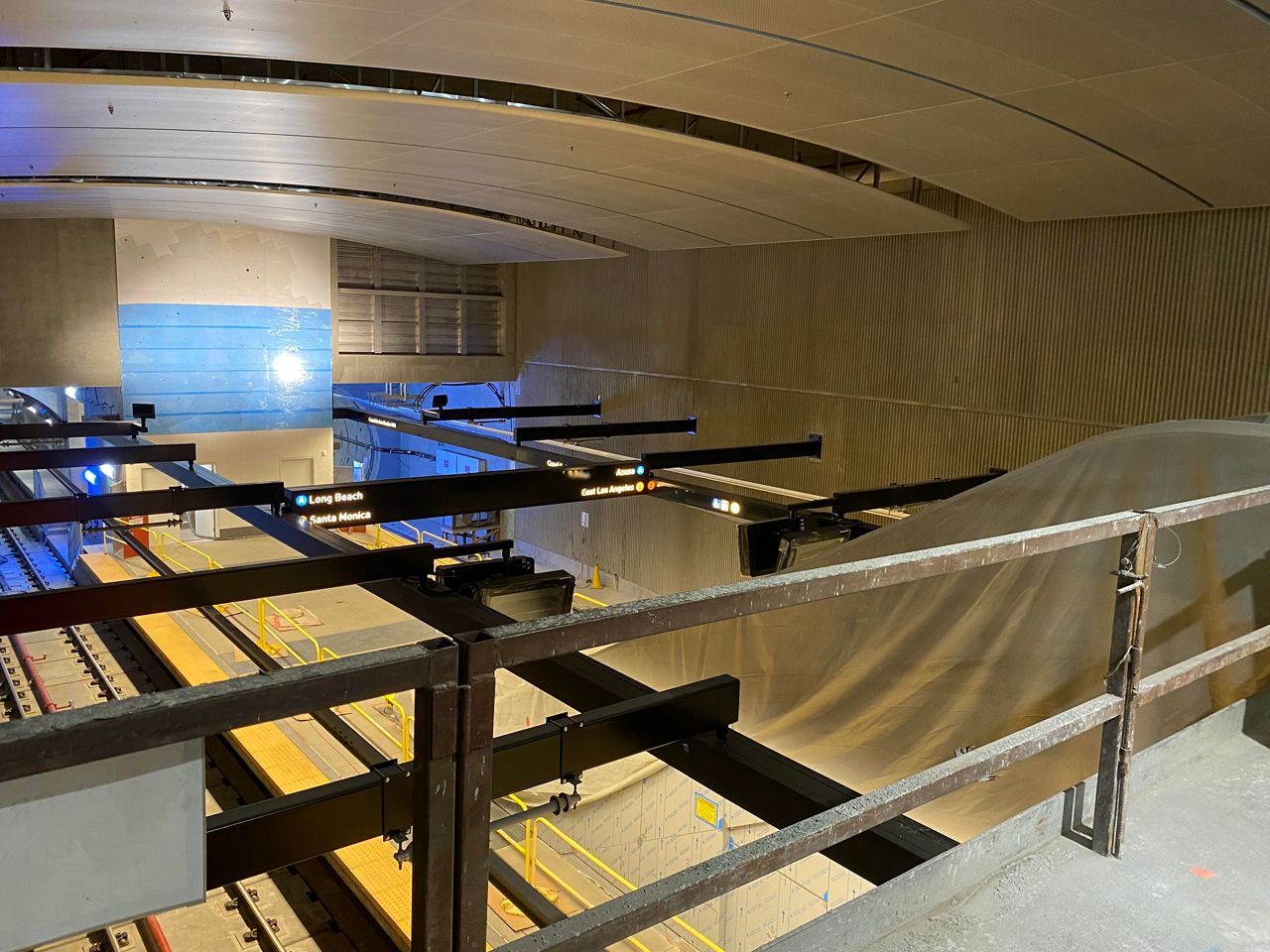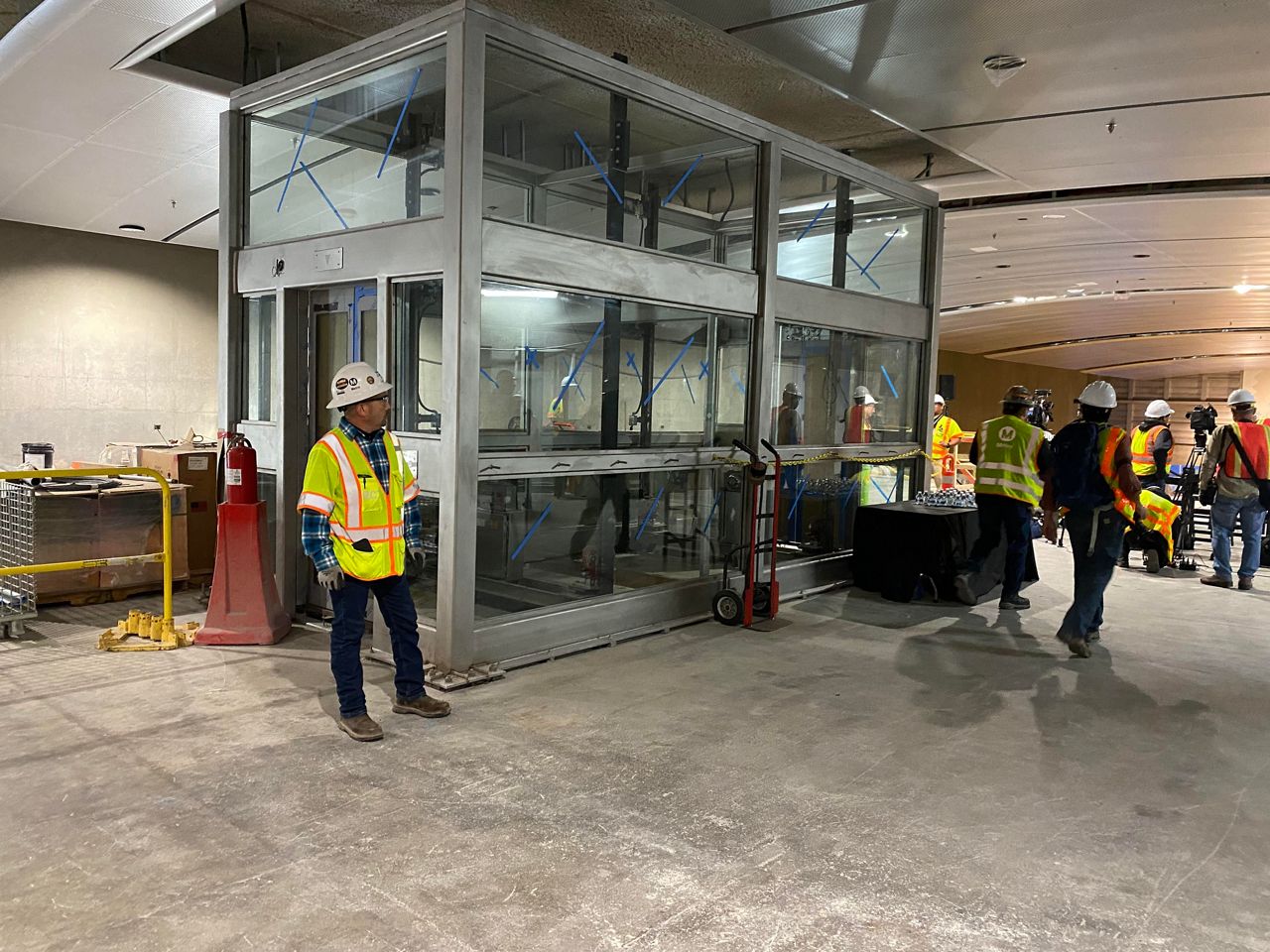LOS ANGELES — Eight years in the making, the Los Angeles County Metropolitan Transportation Authority’s new Regional Connector Transit Project began testing Monday. To celebrate the new system that will connect all of Metro’s light rail lines through downtown LA, Mayor Eric Garcetti, California Assembly member Miguel Santiago, Metro Chief Executive Stephanie Wiggins and Metro Board Chair Hilda Solis donned hard hats and took a spin on a train that will connect a new Grand Avenue Arts/Bunker Hill station to another new stop downtown.
“This is a huge, huge milestone. It puts us on track to open for service by the end of this year,” Garcetti said during an event that took place more than 100 feet underground near the loading platform for the new Bunker Hill station. “After decades of dreaming about a seamless Metro ride through downtown and beyond, we’re getting the job done.”

The Regional Connector Transit Connector Project is intended to fill the gaps between the Gold, Blue, Expo, Red and Purple lines so that travelers no longer need to transfer trains. Once it is complete, Metro will be able to offer a single-seat ride connecting Azusa to Long Beach and East LA to Santa Monica, instead of requiring three trains and two transfers. Metro says traveling across LA County with the Regional Connector can save travelers about 20 minutes.

The $1.8 billion project includes three new stations downtown. Besides Bunker Hill, there will be new stations at Grand Avenue on Broadway and on 2nd Street in Little Tokyo. The entire system is expected to be operational by this fall.
The stations that make up the Regional Connector Transit Project are decorated with towering pieces of art, including a 60-foot tall mural by the artist Pearl C. Hsiung and another piece by California artist Mungo Thomson that renders an image of the cosmos taken by the Hubble Telescope in porcelain enamel steel.

“When I think about the Regional Connector team, I think of three Cs: community, contractor and commitment,” Wiggins said.
Metro has been working with community leaders to address their concerns about the project and also to jointly develop affordable housing opportunities, she said.

The project was built by Regional Connector Constructors, a joint venture between the Swedish construction firm Skanska and the local firm, Traylor Brothers. The project has taken six million hours to build, and has not resulted in any injuries, making it the safest project in Metro history, Wiggins said. She also said the project has had the highest number of women construction workers.
The Regional Connector is one of several large-scale projects Metro will be opening in quick succession. Later this year, the agency will begin service on its long-awaited Crenshaw line that will connect to the Los Angeles International Airport. That will be followed by the first section of the Purple Line extension along the Wilshire corridor and the foothill extension of the Gold Line to Pomona.
“For decades, we wanted to build this world-class transit system,” Garcetti said. “Finally — finally — Los Angeles is delivering.”
CORRECTION: An earlier version of this article incorrectly stated the name of one of the artists whose work is featured in a Regional Connector station. The error has been corrected. (April 15, 2022)



